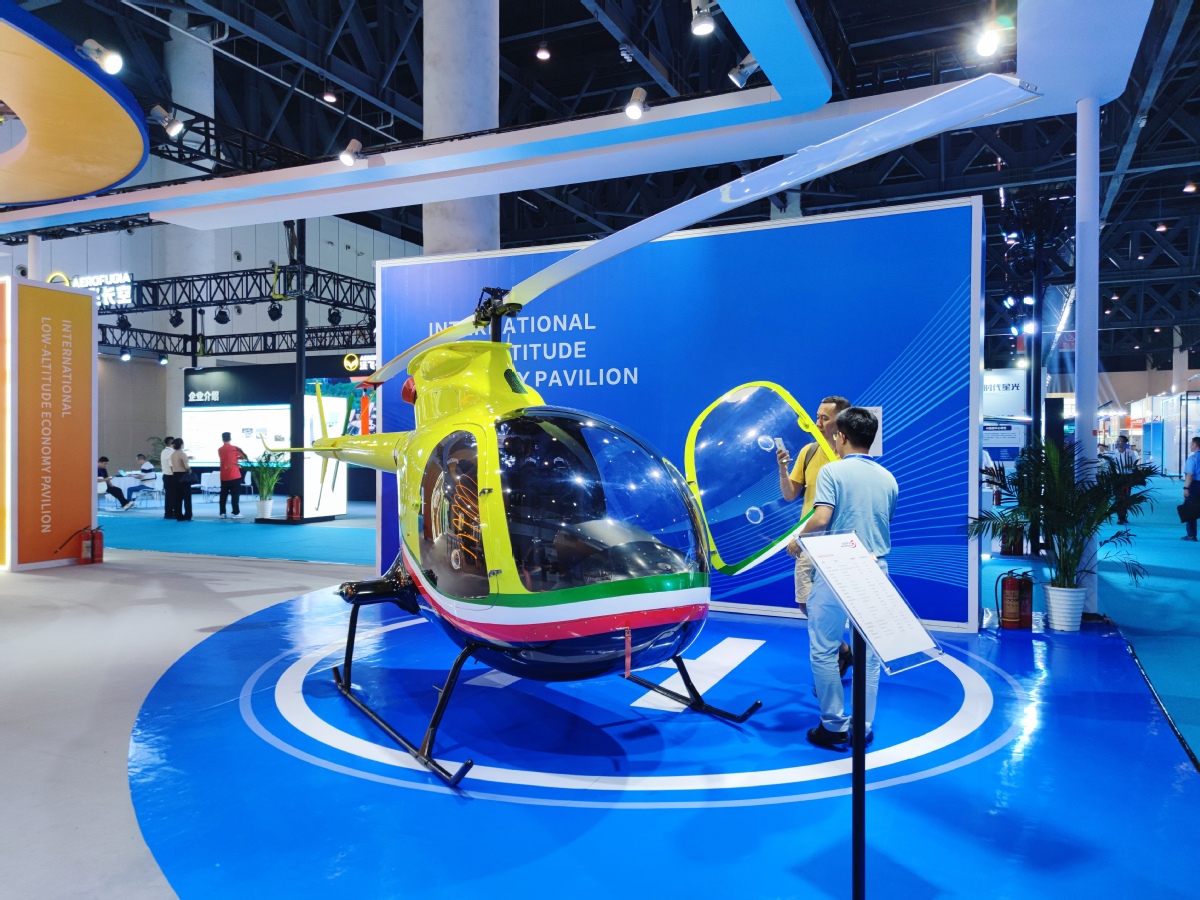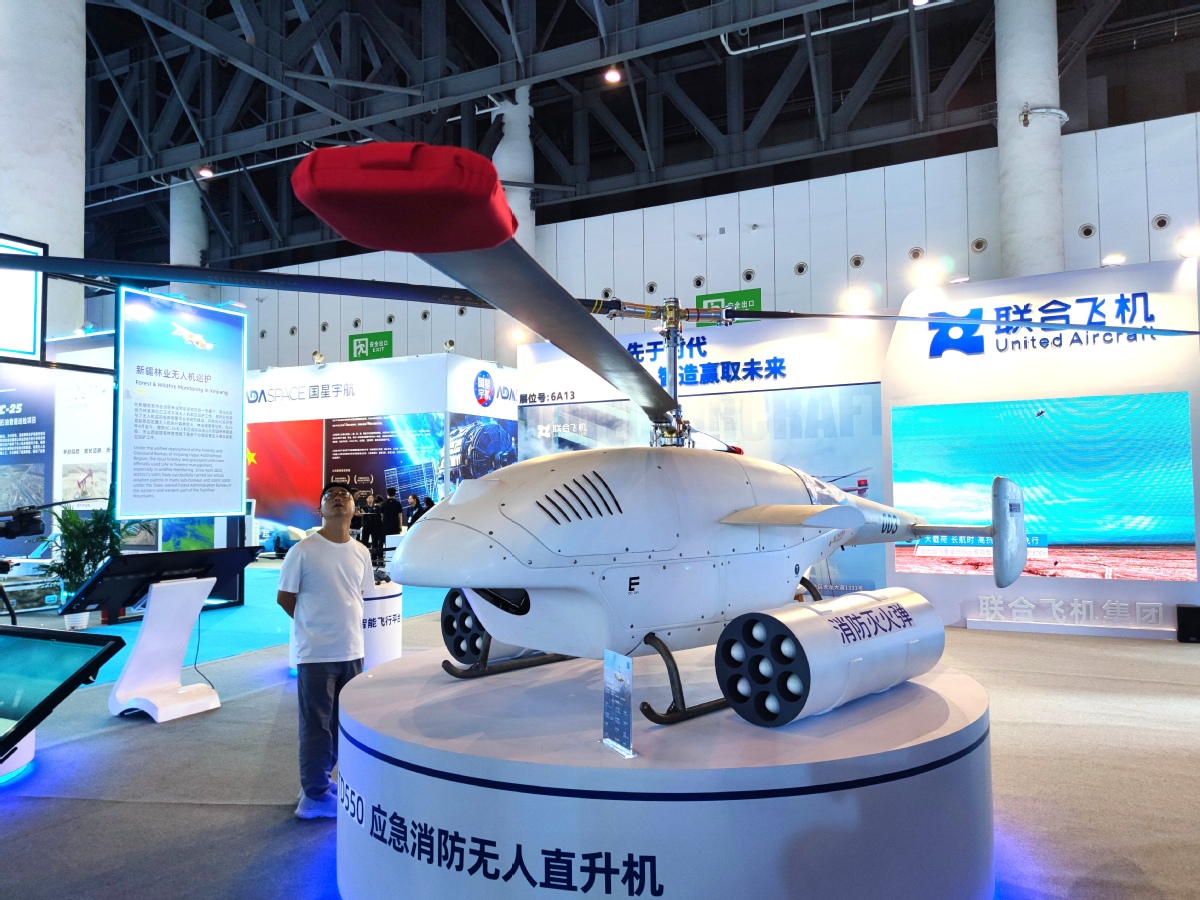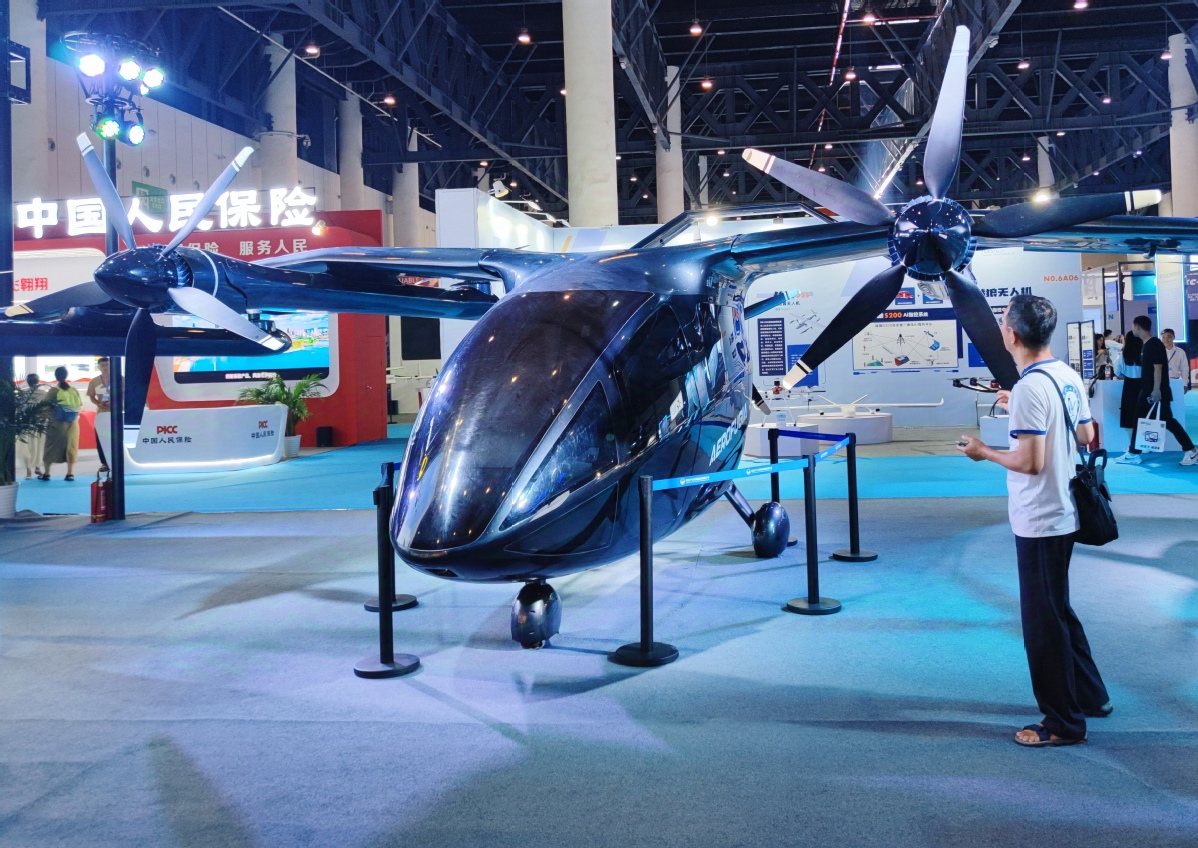
Visitors view a helicopter during the 2024 Chengdu International Low-altitude Equipment and Services Expo, which opened on Thursday in Chengdu, capital of Sichuan province. [Photo by Peng Chao/chinadaily.com.cn]
China's innovative breakthroughs in low-altitude aircraft are driving the country's low-altitude sector to undergo a leapfrog development, profoundly reshaping people's means of travel and experiences in areas such as sightseeing, logistics, and emergency rescue at an unprecedented pace, industry insiders said.
They made the remarks at the three-day 2024 China (Chengdu) International Low-altitude Economic Partnership Conference and the 2024 Chengdu International Low-altitude Equipment and Services Expo, which opened on Thursday in Chengdu, capital of Sichuan province.
"China lags behind developed countries in traditional general aviation, but the development of electric aircraft has given the country an opportunity to overtake its competitors in the low-altitude economy," said Guo Liang, CEO and chief scientist of Aerofugia, a subsidiary of Chinese automaker Geely Technology Group.
He said China's world-leading new energy electric vehicle industry has provided solid industrial support for the development of electric vertical takeoff and landing aircraft, or eVTOL, as 80 percent of its supply chain overlaps with that of electric cars.
Guo said his company aims to obtain an airworthiness certificate for its self-developed AE200, a five- to six-seat manned tiltrotor eVTOL aircraft, by the end of next year or early in the year 2026, and deliver the first batch of aircraft to its clients for trial commercial operations in the first half of 2026.

A visitor views an electric vertical takeoff and landing aircraft, or eVTOL, during the 2024 Chengdu International Low-altitude Equipment and Services Expo, which opened on Thursday in Chengdu, capital of Sichuan province. [Photo by Peng Chao/chinadaily.com.cn]
He believes eVTOLs are more likely to be used for business travel in the early stages as they can significantly reduce travel time, and after the industry matures, the cost will be significantly reduced to a range that is affordable for ordinary people.
"The cost of taking an air taxi may be two to three times that of ground transportation, but the travel efficiency can be up to five times," he said.
He mentioned that due to the shortage of emergency helicopters in China, people's first response to sudden illness or injury is to call for an ambulance. In the future, eVTOLs are expected to play a crucial role in this area.
The eVTOLs can also provide fast connections between scenic spots in areas with complex terrain, thereby changing people's travel habits and improving their tourism experiences, he added.
Xu Huawei, public relations director of Sichuan Tengden Sci-tech Innovation Co Ltd, said the application of unmanned aerial vehicles in artificial weather modification is booming as extreme weather conditions have become more frequent in recent years.
The company has signed cooperation agreements with several provinces and autonomous regions to conduct experimental flights and normalized operations for weather modification, he said.
For example, Xu said, his company launched a pilot project for artificial snowmaking in the Xizang autonomous region in October last year to slow down glacier melting and preserve the local ecological environment.
The emerging large-scale unmanned cargo aircraft with high intelligence will also further improve China's logistics efficiency and reduce costs, he said.

A visitor views an unmanned firefighting helicopter during the 2024 Chengdu International Low-altitude Equipment and Services Expo, which opened on Thursday in Chengdu, capital of Sichuan province. [Photo by Peng Chao/chinadaily.com.cn]
Ren Bin, chairman of Chengdu-based industrial UAV manufacturer JOUAV, said UAVs, equipped with all kinds of sensors will empower comprehensive management in various fields such as transportation, forest inspection and urban management.
"Low-altitude digital economy, rather than low-altitude transport and logistics, will probably be the main business form and growth point of low-altitude economy in the next five to 10 years," he said.
Cheng Chengqi, a Peking University professor and a member of China's air traffic management advisory committee, proposed to build a low-altitude three-dimensional traffic signal system to empower low-altitude traffic management and safe navigation.
Similar to how we use car navigation systems, once the start and end points are set, this system can plan feasible flight routes for low-altitude aircraft, he said.
"The era when air taxis will be as popular as cars today is coming soon," Cheng said, adding that this system will enable everyone to fly an air taxi and every household to enjoy the services they provide.
The market scale of China's low-altitude economy reached 505.95 billion yuan ($71.77 billion) in 2023, up 33.8 percent year-on-year, and is projected to surpass 1 trillion yuan in 2026, according to a report by market research institute CCID Consulting.